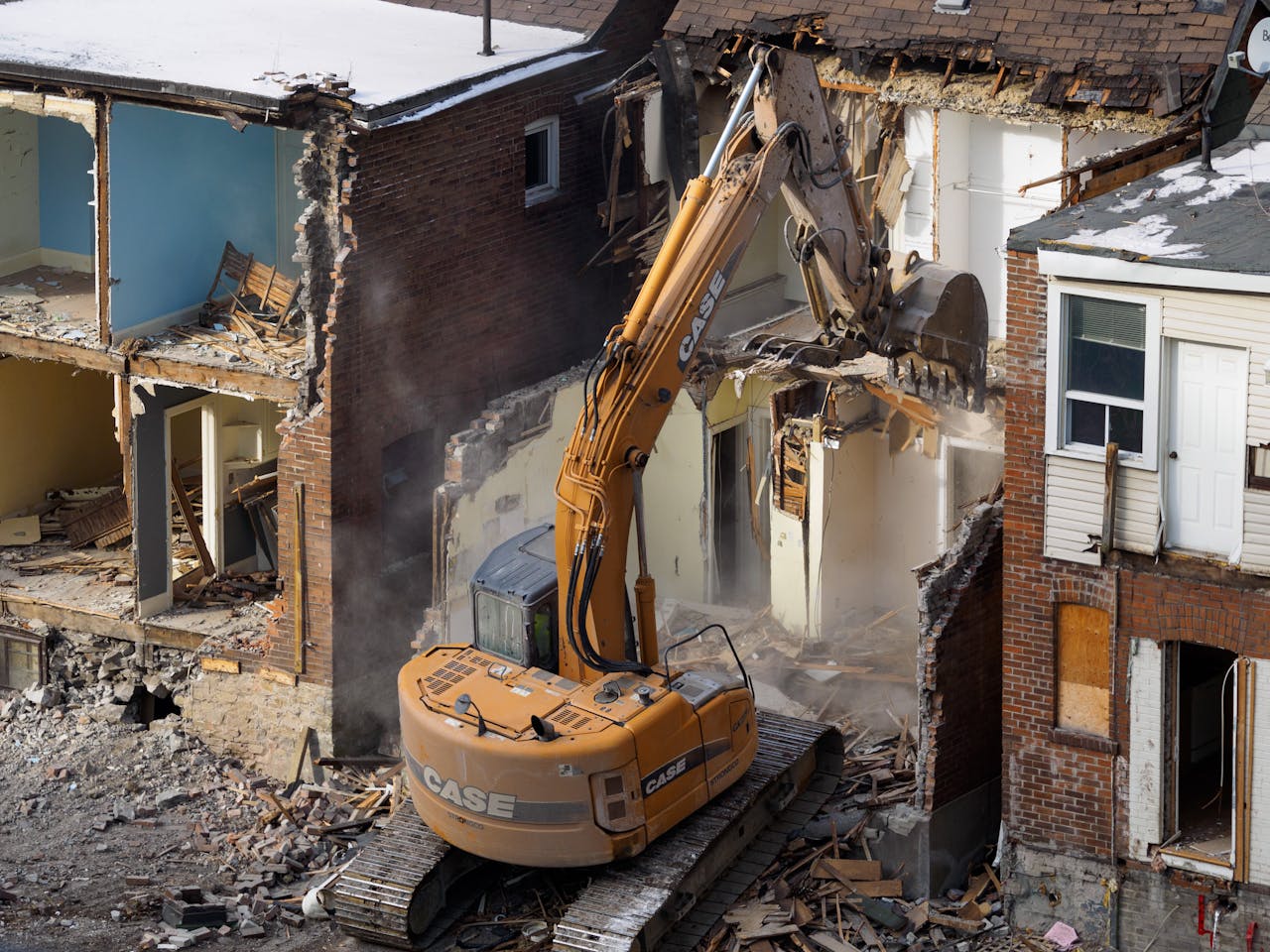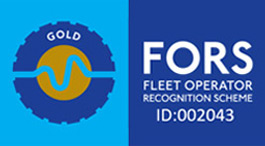Back to Listing
Skip Hire for House Clearances: A Comprehensive Guide

With a reliable skip hire service, you can efficiently dispose of unwanted items without the stress of navigating local waste disposal regulations.
Choosing the right skip size is crucial. It ensures you have enough space for all the items you want to remove. A dependable company can guide you through selecting the ideal skip for your needs while providing a smooth, hassle-free experience.
This step-by-step guide will walk you through every aspect of using skip hire for your house clearance, from selecting the right size to booking a reliable service. Get ready to take control of your space and enjoy a cleaner, more organised environment.
Understanding Skip Hire for House Clearances
Skip hire is a practical solution for managing household waste during a house clearance. It allows you to efficiently dispose of unwanted items while supporting an eco-friendly approach to waste management.
What is Skip Hire?
Skip hire involves renting a large container, known as a skip, for the purpose of waste disposal. These skips come in various sizes to accommodate different amounts of rubbish, from small loads to large clearances.
When you hire a skip, it is delivered to your property, making it easy for you to fill it with unwanted items. The skip hire company then collects the skip when you are finished. This service simplifies waste removal, especially during house clearances, as you can manage your rubbish at your own pace.
The Importance of House Clearances
House clearances are essential for creating space and maintaining organisation in your home. They allow you to remove accumulated household waste and unwanted belongings.
Using a skip during this process supports an eco-friendly approach by ensuring proper disposal and recycling of materials. This reduces the impact on landfills and contributes to a cleaner environment.
Additionally, clearing out your home can improve your mental wellbeing by reducing clutter and creating a more serene living space. It enables you to focus on what matters most, making room for new memories and experiences.
Choosing the Right Skip Size
Selecting the appropriate skip size is essential for a smooth house clearance. By accurately estimating the amount of waste and understanding the different types of skips, you can ensure that your project goes off without a hitch.
Estimating the Amount of Waste
Before hiring a skip, assess the volume of waste you will generate. Start by going through each room and making a list of items to dispose of.
To gauge the amount of waste:
- Compare with Standard Measurements: A standard skip size is often measured in cubic yards. One cubic yard is roughly equivalent to a small bath.
- Use Visual Aids: You can visualise how much waste fits in a skip by filling a box with items you plan to discard. This method helps you judge the volume accurately.
If you're unsure, it’s wise to consult with your skip hire company. They can guide you based on your project specifics and recommend a size that will meet your needs effectively.
Types of Skips: Mini, Midi, and Maxi
There are three main types of skips you can choose from: mini, midi, and maxi. Each is suited for different amounts of waste.
-
Mini Skip: This is ideal for small amounts of waste, such as garden debris or minor household clear-outs. Typically, it holds up to 2 cubic yards.
-
Midi Skip: A good choice for medium-sized projects, a midi skip can hold around 4 to 5 cubic yards. It’s perfect for larger house clearances, including small furniture and appliances.
-
Maxi Skip: For significant clearance tasks, a maxi skip offers ample space, generally ranging from 8 to 16 cubic yards. This type is suitable for full house clearances or substantial renovation projects, accommodating bulky items like furniture and white goods.
Knowing the differences between these skip sizes allows you to choose the right skip for your project, streamlining the waste disposal process.
Navigating Legal Requirements
When hiring a skip for house clearance, it's crucial to understand the legal requirements involved. This includes obtaining the necessary permits and ensuring compliance with local regulations, including the Waste Electrical and Electronic Equipment (WEEE) regulations.
Skip Hire Permits
Before placing a skip on public land, you need a skip hire permit. This permit is issued by your local council and is essential for legal compliance.
Key Points about Skip Hire Permits:
- Application Process: You can often apply online through your local council's website. Provide details such as the skip's size, duration of hire, and the planned location.
- Fees: There may be a fee for the permit, which varies by area. Ensure you check the costs before applying.
- Duration: Permits are usually valid for up to one month, but you can often renew them if necessary.
Make sure to secure your permit before placing the skip to avoid potential fines or legal issues.
Compliance with Local Regulations and WEEE
Every local council has specific regulations regarding skip hire and waste disposal.
Important Points to Consider:
- Local Regulations: Check with your council about specific rules on skip placement, including distance from roads and access for vehicles.
- WEEE Regulations: If you’re disposing of electrical items, you must follow WEEE regulations. This means taking care to recycle electronics appropriately.
Steps to Ensure Compliance:
- Consult Local Council: Always verify local skip hire rules.
- Recycling Requirements: Use designated locations for recycling electrical waste.
- Waste Sorting: Separate recyclable materials from general waste in your skip.
By following these guidelines, you ensure a smooth and legal skip hire process for your house clearance.
Cost Considerations
When planning for skip hire during a house clearance, understanding the costs involved is essential. Getting accurate quotes and comparing services can significantly impact your budget and the overall process.
Obtaining a Quote
To start, reach out to several skip hire companies for quotes. Most companies offer free quotes based on the size of the skip and the duration you'll need it. Be specific about the type of waste you will dispose of, as this can affect pricing.
Many companies provide online quote tools, making it convenient to compare costs without calling each business. Ensure the quote includes potential extras, such as delivery, collection, and any additional fees for specific waste types.
Keep in mind that smaller skips can cost around £100, while larger skips might range from £200 to £400 or more. Always verify the details of the quote to avoid hidden charges.
Comparing Skip Hire Services
Once you have several quotes, it's time to compare the skip hire services on offer. Focus not just on price but also on what each company provides. Look for factors such as reliability, customer service, and the condition of their skips.
Check reviews and ratings to gauge the quality of service. A company that is slightly more expensive but has excellent ratings may save you hassle in the long run.
Additionally, consider any special deals or packages that companies may offer. Some might include discounts for long-term hires or multiple skips. This can help you stay within your budget while ensuring you have the necessary support during your house clearance.
Preparing for Skip Delivery
When you hire a skip, preparing for delivery is crucial. Proper planning can help ensure that the delivery goes smoothly and that your skip is placed in an optimal location.
Site Access and Placement
Before the skip is delivered, check that the delivery vehicle can easily access your property. Look for any obstacles, such as low-hanging branches, narrow paths, or tight corners that might hinder the journey. It’s important to have a clearance of at least 3-4 metres to avoid accidents during delivery.
Choose a placement area that is firm and level, ideally on your driveway or a hard surface. If you must position the skip on the street, you might need to inform your local council and possibly obtain a permit. This step is essential to avoid any fines or complications during the process.
Safety Measures
Taking safety measures before skip delivery can prevent issues later on. First, clear the area around where the skip will be placed. Remove any items that may cause trip hazards or block access.
Also, ensure that children and pets are kept away during the delivery process. The skip lorry will be large and heavy, and it’s vital that everyone is safe. If there are overhead power lines, inform your skip hire company. They need to know about these lines to ensure safe delivery.
Eco-Friendly Waste Management and Disposal
Effective eco-friendly waste management is essential for responsible house clearance. You have options to sort and recycle your household waste, along with safe disposal of hazardous materials. Understanding these methods can help minimise environmental impact and promote sustainability.
Sorting and Recycling Household Waste
Start by sorting your household waste into different categories. Common categories include:
- Paper and Cardboard: Flatten boxes and keep them tidy for recycling.
- Plastics: Rinse containers and check local guidelines for recyclable types.
- Glass: Clean glass bottles and jars for proper recycling.
By separating these materials, you help recycling facilities process them efficiently. Many local councils offer kerbside recycling services. Check with them for your recycling schedule.
Consider using a service that focuses on recycling. For instance, companies like Zero Waste Group prioritise recycling and upcycling. This means less waste reaches landfills, and more materials get reused.
Disposing of Hazardous Waste Responsibly
Hazardous waste includes items like batteries, paints, and chemicals. You must never throw these in standard rubbish bins. Instead, locate facilities specifically for hazardous waste disposal.
Many local councils provide designated drop-off points. Check if your area offers special collections for these items. Another option is to use services that handle hazardous materials. They ensure safe and compliant disposal, minimising environmental risk.
When managing hazardous waste, always label items clearly. This practice helps disposal workers identify dangers quickly. Follow your local regulations closely to avoid potential fines or environmental harm. Proper disposal not only protects your home but also contributes to a healthier environment.
Additional Services and Options
When planning a house clearance, there are several services you might consider to make the process smooth and efficient. These options can cater to specific needs, whether for your home or a professional site.
Garden and Home Renovation Clearances
For garden clearances, you can dispose of unwanted plants, debris, and old garden furniture. This cleans up your space and prepares it for new landscaping or gardening projects. If you are renovating your home, expect to remove old fittings, appliances, and construction waste.
Using a skip is beneficial. You can sort waste while working, reducing clutter. Depending on the size of your project, consider a larger skip for bulkier items. Ensure you check local regulations regarding garden waste disposal, as some items may need special handling.
Commercial and Site Clearances
In commercial settings, you may need to clear larger items like office furniture and electronic equipment. Site clearances often involve removing construction materials and debris, which can accumulate quickly during a project.
Businesses often choose skip hire for simplicity in decluttering. You can get a skip delivered right to your site, allowing you to dispose of waste safely and legally. Make sure to select the correct skip size based on the volume of rubbish to avoid unnecessary costs.
Rubbish removal services can also be arranged for items that cannot go into a skip. This ensures everything is handled appropriately and disposed of responsibly.
Selecting a Skip Hire Company
Choosing the right skip hire company is essential for a smooth house clearance. You need to focus on two main areas: evaluating the reliability of the service and understanding pricing structures.
Evaluating Reliability and Service
When choosing a skip company, reliability should be your top priority. Start by checking online reviews and ratings. Look for feedback on timeliness, customer service, and skip availability.
A trustworthy hire company should be clear about their procedures. Ensure they provide information on delivery and collection times. A reliable skip service will keep its promises without hidden surprises.
Also, verify their waste disposal methods. The best companies adhere to environmental regulations, ensuring that your waste is handled responsibly. Assess if they offer customer support for queries or issues.
Understanding Pricing and Offers
Next, consider the pricing structures offered by different skip companies. Prices can vary based on size, location, and rental duration. It's smart to get quotes from multiple providers.
Be aware of extra costs, such as fees for overfilling the skip or charges for permits if required. Some hire companies may offer discounts for longer rentals or bulk orders.
Look for companies with straightforward pricing. Hidden fees can lead to surprises later on. It helps to ask for a detailed breakdown of costs before making your decision.
In summary, take your time to compare reliability and costs to find the best skip hire company for your needs.
Planning and Executing Your House Clearance
When preparing for a house clearance, effective planning and logistics are key to a smooth process. Addressing scheduling first will help you stay organised. Then, create a final checklist to ensure nothing important is forgotten as you tackle decluttering and waste materials.
Scheduling and Logistics
Start by determining a clear date for your house clearance. Consider your availability and the size of the space you’re clearing. If you’re moving house, it's best to plan the clearance close to your moving date. This will help limit the amount of clutter you need to manage.
Next, assess the access to the area you’re clearing. Ensure that delivery vehicles and skips can reach your property easily. If necessary, reserve parking spots to avoid any interruptions during the clearance.
Remember to hire a skip suitable for the amount and type of waste materials you will create. This will help contain everything and make disposal easier. Make sure you check local regulations regarding skip placement.
Final Checklist
Before you start clearing, compile a final checklist to keep track of tasks. Begin with sorting items into categories such as keep, donate, recycle, and dispose. This makes decluttering manageable.
Create a specific plan for each room. Include which items you will keep and what needs to be handled as waste materials.
As you clear each area, check items off your list to ensure nothing is missed.
Lastly, arrange for charity pickups or recycling services if needed. Doing this before the actual clearance can ease the burden on the day.









